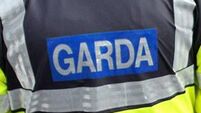Report shows cancer survival rates improving, but number of women with fatal lung cancer is up

While the latest annual report from the National Cancer Registry (NCR) contains much to be upbeat about — long-term survival rates for men jumped almost 20 percentage points (up from 42% to 60%) for the period 2005-2009, compared to 1994-1999, and survival rates for women jumped 10 percentage points (from 52% to 62%) — the picture for those with lung cancer is more grim.
The number of women dying from lung cancer is the sixth highest in Europe, and death rates are 34% above the European average — and continuing to rise.












